From rarity and remarkability to vibrancy and value, United States small-size banknotes seem to exist in the shadow of their pre-1929 large-size counterparts in nearly every way possible. In early 1929, the era of Battleships, Bisons, and Black Eagles came to an unceremonious end, giving way to a new generation of circulating banknote issues that had been substantially reduced in physical size, featuring printed designs that were less creative, less colorful and, as some may argue, less collectable.
Collectors of U.S. small-size notes would disagree. In addition to the basic affordability and accessibility benefits to the average hobbyist, the multitude of varieties, sub-varieties, and other subtle anomalies that exist within the small-size universe make for a very compelling and captivating area of numismatic interest. The small-size “Noteworthy Note” featured here may not be a Woodchopper or a Watermelon, but it still packs quite the punch. Although, it’s a highly nuanced note that requires a little research and understanding of Bureau of Engraving and Printing (BEP) production practices to fully appreciate.
This Series 1934-B $20 Federal Reserve Note from the New York district, recently certified by PCGS and graded Very Fine (VF) 25, has an overlapping, intersecting set of scarce varietal attributes that magically merge to create a banknote that may be, perhaps, utterly unique. First, let’s start with the series. The “B” series of 1934 Federal Reserve Notes (not to be confused with the “B” letter code representing the New York Federal Reserve district) was signed by Treasury Secretary Fred M. Vinson, who vacated his post just 11 short months after presidential appointment to accept a new position within the federal government as the 13th Chief Justice of the U.S. Supreme Court. His relatively short time overseeing the U.S. Treasury Department meant shorter press runs of banknotes displaying his engraved signature, making banknotes from Series 1934-B generally tougher to come by, vis-à-vis adjacent series such as 1934-A and 1934-C.
Next, it does not take long to recognize the Star Note status here. The two big, bold, green stars suffixed to the end of both serial numbers means only one thing – this note was a replacement for another note that had somehow become damaged or otherwise failed to meet the stringent BEP fitness standards for issuance. Since the BEP does a fairly good job of making high-quality, usable products, Star Notes represent only a very small fraction of what is ultimately released by the security printing agency. Check off another box in the rarity column for this one…
Now, finally – the kicker. Plates used to print the majority of U.S. banknotes over the decades (for both faces and backs) have tiny numbers engraved onto them for critical accounting, cross-referencing, and security purposes. This banknote’s back side was printed with plate #204 – a very special plate that is “Late Finished.” Originally assigned #204 in December 1934, engraving began around that time but was not finished until nearly 10 years later! Late Finished Back Plate #204 was finally positioned onto the presses in April 1944, and remained in use for only about two-and-a-half years, printing back designs of $20 bills alongside plates numbered into the high 400s and early 500s by that time. The lowly number 204 sticks out like a sore thumb.
How many banknotes with the exact combination of these specific characteristics are in existence? That is tough to say, since new discoveries are made all the time. However, based on what is officially known to exist now, this seems to be a unique example for the series and district, joining only a small handful of other Late Finished Back Plate #204 Star Notes known from all series and districts combined.
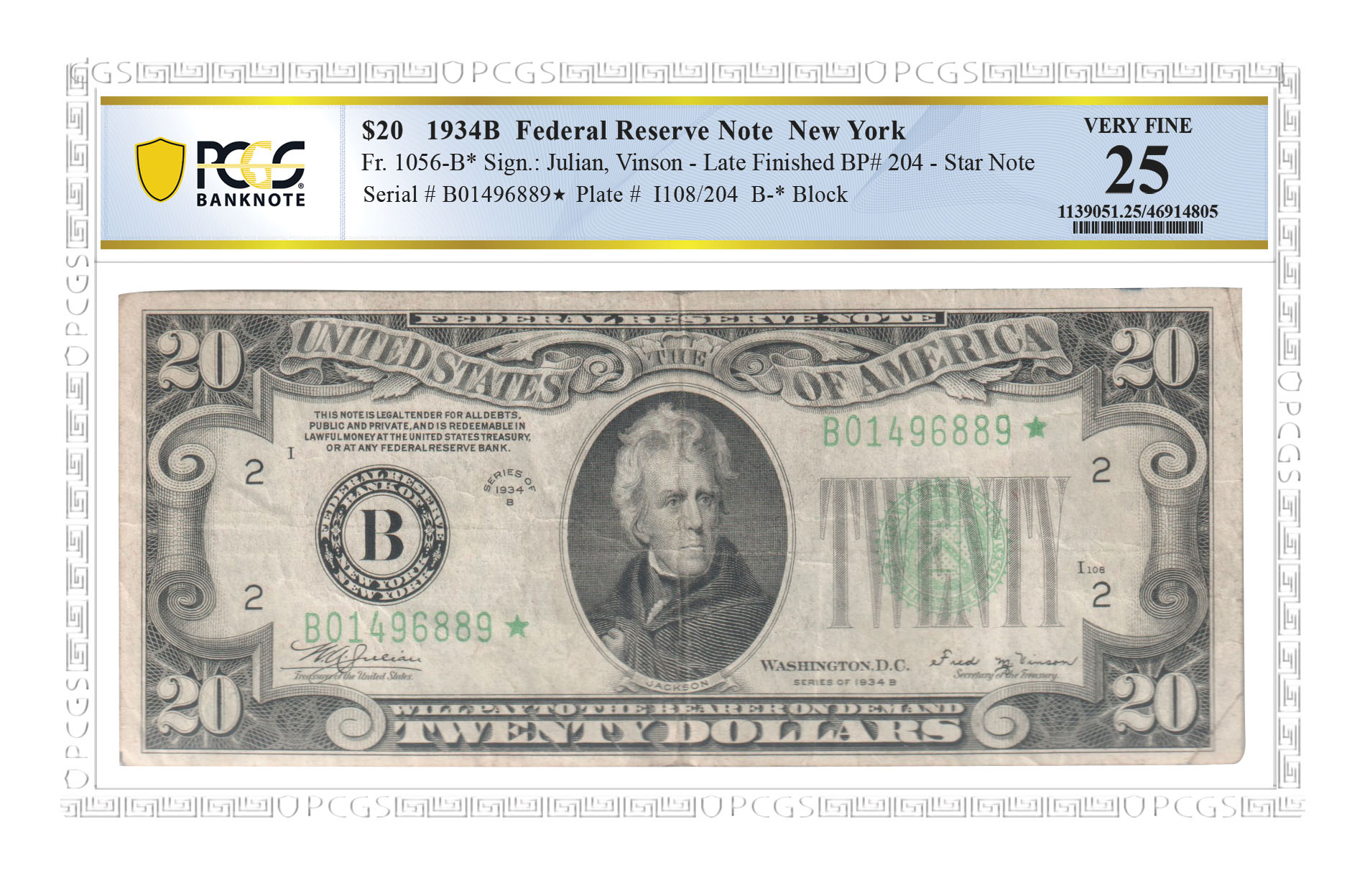
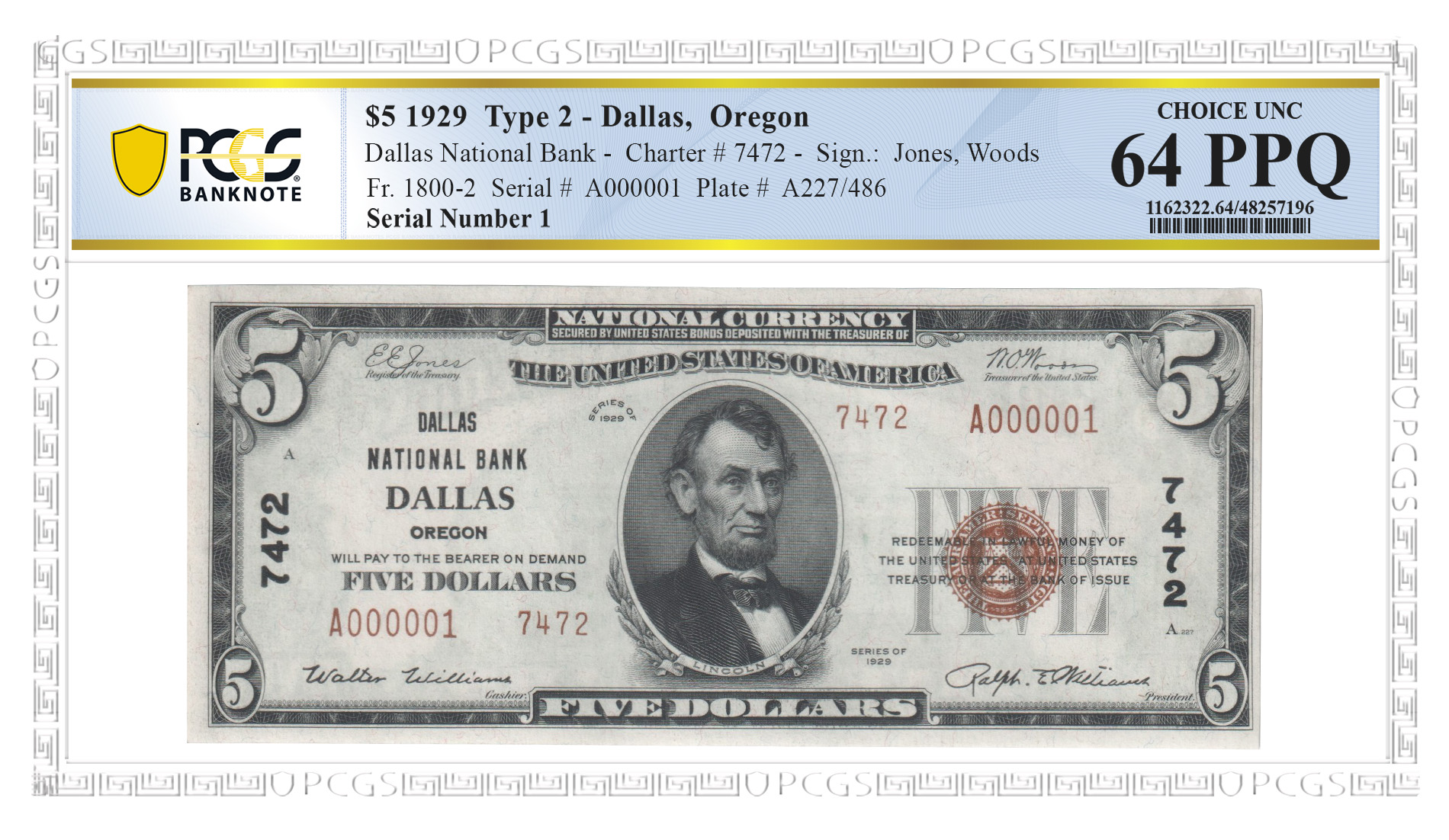
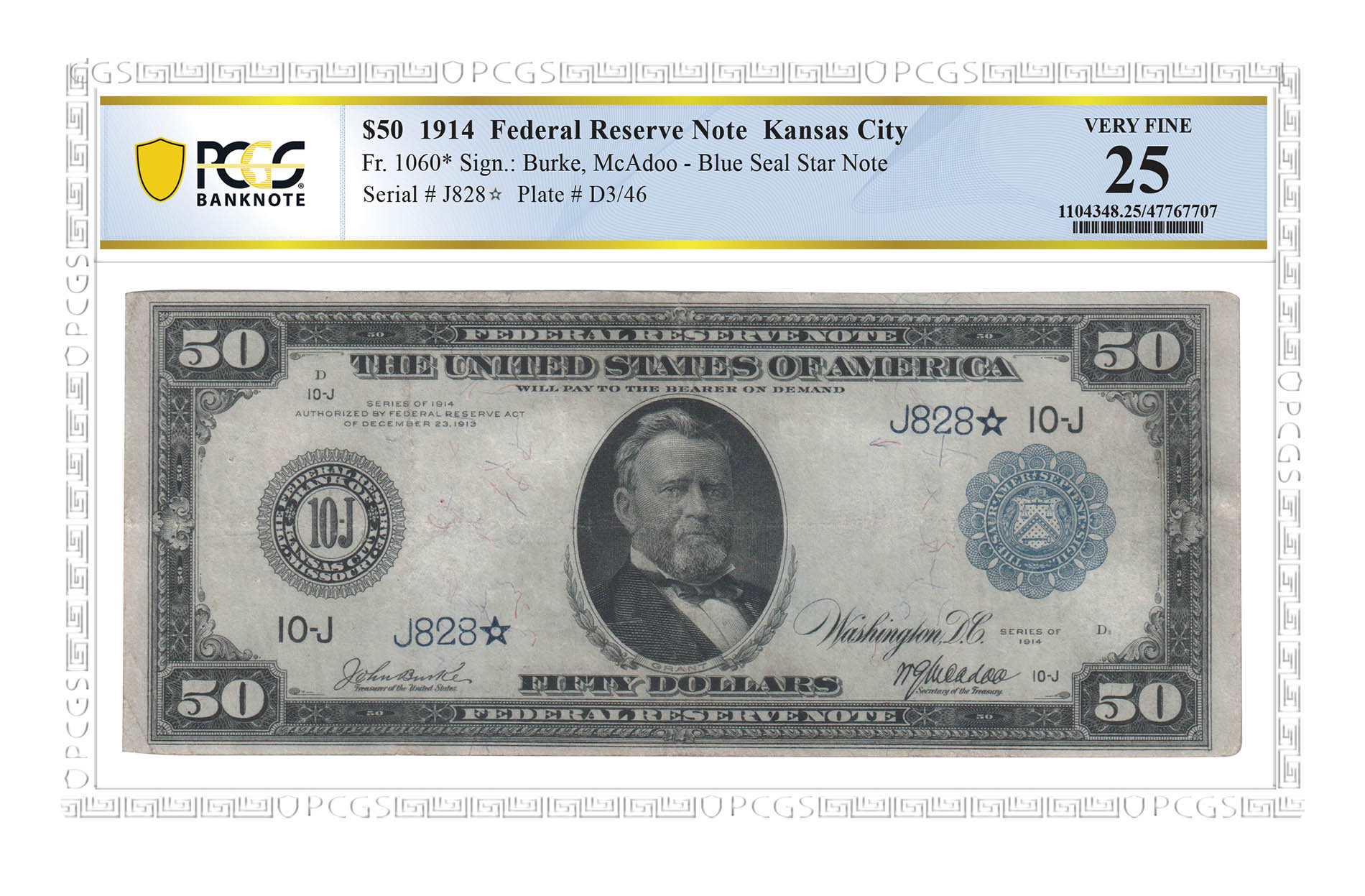
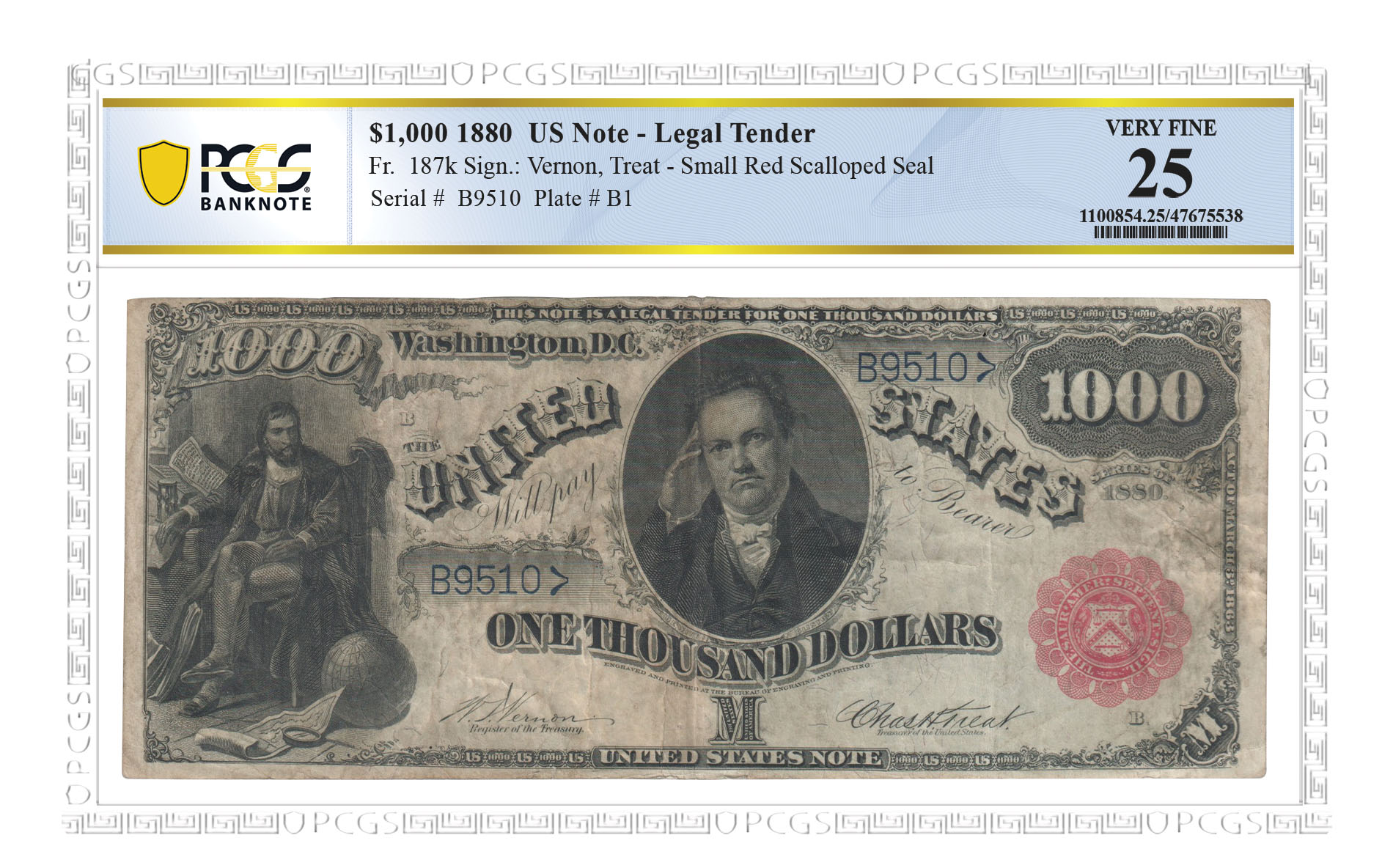

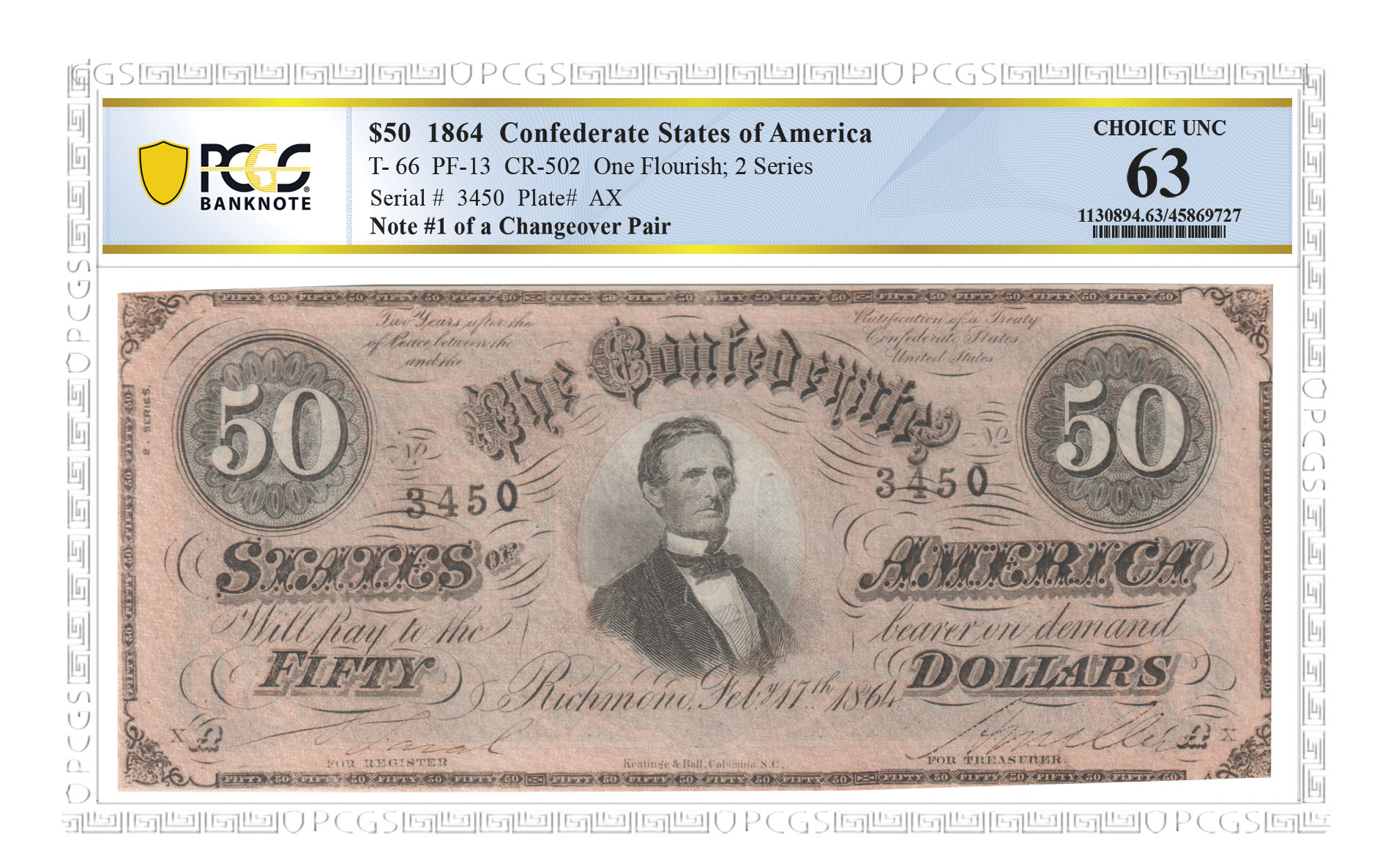

 Copper & Nickel
Copper & Nickel
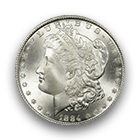 Silver Coins
Silver Coins
 Gold Coins
Gold Coins
 Commemoratives
Commemoratives
 Others
Others
 Bullion
Bullion
 World
World
 Coin Market
Coin Market
 Auctions
Auctions
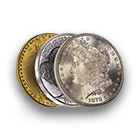 Coin Collecting
Coin Collecting
 PCGS News
PCGS News